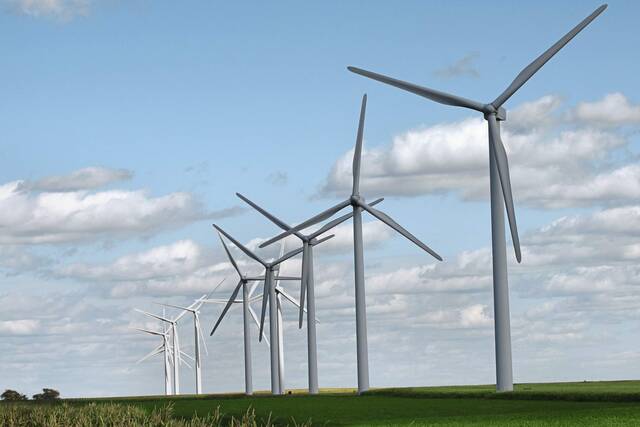Robert T. Smith: Tilting at global warming windmills
Just as Don Quixote tilted at the windmill of the evil giants in his mind, so we tilt at the windmill of man-caused global warming. The alleged environmentally friendly “green energy” alternatives are the add-on tragedy to the battle with the earth’s climate.
While much of the world struggles with the basics of survival, in the western world we have identified that our fossil-fuel energy supplies that have allowed us our high standard of living must be abandoned for the allure of “green energy.” But the reality is quite different.
Take the case of windmills. Setting aside the assault on the visual aesthetics, boutique nature of wind power and the avian-salad chopper function of these giants of inefficiency, how are these “green energy” monstrosities manufactured?
Aluminum that is used to manufacture the windmills starts as bauxite ore that is strip-mined from the earth. The potential for environmental impact caused by strip mining is well documented. The heavy equipment necessary to relieve Mother Earth of her ore requires the use of evil fossil fuel to burn in the engines and refine into lubricating and engine oils, rubber manufacturing for tires, and parts that generate toxic chemical emissions and surface water discharges, coal extraction and coking in the process of making the steel structures of this behemoth mining and transport equipment. All of the heavy industry components of the mining and transport equipment just to bring the ore to processing, to create “green energy.”
Manufacture of aluminum is generally a two-step process. In overview, crushing, washing and digesting to extract alumina from the ore, followed by refining the alumina into aluminum. The result of the first step of the process yields tailings and multi-acre large tailing ponds of the “red mud” waste derived from the process. The red mud is toxic and environmentally dangerous. Currently, more than 77 billion tons of red mud are estimated to be produced each year, to create “green energy.”
It takes on average 4 to 5 tons of bauxite to produce 2 tons of alumina, yielding 1 ton of aluminum. The main solid by-product of the alumina extraction (Bayer process) is the red mud, and roughly 3 tons of waste are generated for every ton of alumina, to create “green energy.”
In addition to the many components of a windmill structure and the generator magnets, steel, aluminum, rare earth minerals and copper, and even many dozens of gallons of lubricating oil per windmill, aluminum-clad balsa wood is used due to its light weight, to generate the “green energy.” “Balsa fever” is the term coined for the increased demand that has led to deforestation of virgin balsa in the Amazon basin. The social and environmental harmful impacts of the “fever” in these poor countries are other add-ons to create “green energy.”
The climate of the earth has, is and will continue to change due to natural short, medium and long-term cycles. Since the 1970s, the climate prediction models have not been accurate to the actual temperature, and catastrophic or existential predications have not come to truth for the various ominous warnings of man-caused climate change. Rather than taking a measured or gradual transitional approach to include all forms of energy, here we are in the Western world, where emotions have become facts as we work to destroy the effective, available and reliable fossil fuels to build “green energy’” windmills as apparent shrines to our modern-day madness.
Robert T. Smith is an environmental scientist and co-owner of a Pittsburgh-area environmental consulting company.
Remove the ads from your TribLIVE reading experience but still support the journalists who create the content with TribLIVE Ad-Free.

